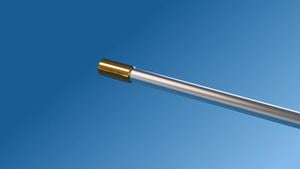Researchers have developed a groundbreaking wireless electroretinogram (ERG) recording system capable of producing high-quality measurements for assessing retinal health. This innovative device, created by scientists from the Chinese University of Hong Kong, has shown significant promise for both clinical and research applications, reducing noise and potential drift typically associated with traditional ERG setups.
Electroretinography is widely used to evaluate retinal function by measuring the electric potentials generated by retinal cells when exposed to light stimulation. Still, conventional recording systems often face challenges such as electromagnetic interference from power lines, which can distort signal quality. The newly introduced wireless system aims to overcome these obstacles through advanced on-source signal processing and Bluetooth technology.
The research team, led by T.C.M. with key contributions from colleagues W.Y.Y., C.P.P., and M.E.B., embarked on this project with the goal of enhancing the reliability of retinal assessments. "Our study demonstrates a proof of concept for performing wireless ERG recordings, which enhances performance by reducing noise and potential drift in the recorded signals," said the authors of the article.
The new device functions by amplifying and digitizing the ERG signals directly at the source, prior to wireless transmission. This approach minimizes the length of electrode cables, which are prone to pick up interference. Testing involved comparisons between the wireless system and the established Espion E3 recording system using anesthetized wild-type mice as subjects.
Results from the experiments indicated parity between the two systems. Parameters such as the amplitude and peak times of the recorded signals were found to be statistically equivalent, with no significant differences noted for key metrics like the a-wave and b-wave signals. "The waveshapes were similar in both recording setups; the noise and drift in the wireless recording module were substantially less," the authors remarked.
Specifically, it was found the wireless system displayed significantly reduced offset potential drift. This drift, often caused by fluctuations in signal baseline during recording sessions, can compromise measurement accuracy. The researchers noted the importance of minimizing this drift, as it could lead to biased measurements of ERG properties, particularly when assessing the amplitudes of key signal components.
Another noteworthy aspect of the wireless setup is its enhanced resilience against powerline noise interference. When subjected to conditions simulating potential electromagnetic interference, the wireless device demonstrated superior performance compared to the traditional system. "The combined improvement of offset potential drift and powerline noise enhances the performance and precision of the ERG signal recordings, which improves the reliability of clinical interpretation," indicated the authors.
Portability is also greatly improved with this new device, which measures just 50 x 30 millimeters and weighs under 300 grams. This compact size makes it considerably lighter and more convenient compared to existing commercial ERG equipment. Such attributes could translate to enhanced patient comfort and ease of use during clinical assessments, as patients will no longer be tethered by cables.
Looking to the future, the authors acknowledged the current limitations of their system, particularly the necessity for validating its effectiveness with human subjects. Nonetheless, the preliminary results offer promising insights indicating potential broader applicability across various clinical contexts. "The portable nature of the wireless device together with the smartphone app makes the system easy to implement and convenient to use," they concluded.
Through this innovative advancement, the research team hopes to pave the way for enhanced electroretinography applications, offering both improved signal quality and patient experience, which can lead to more reliable diagnostics for retinal health.



